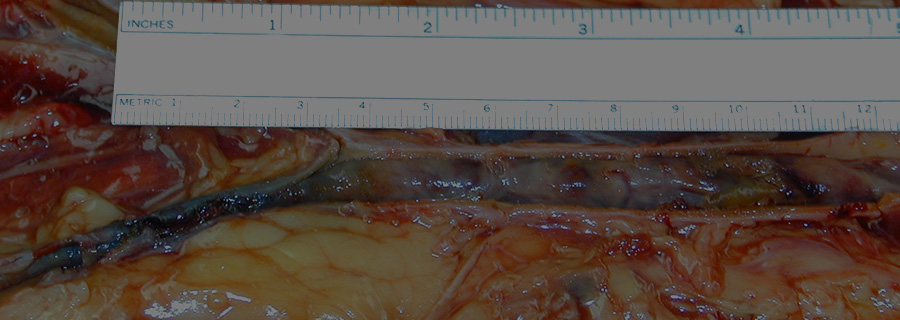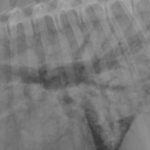Pointers for the neurological examination of “back dogs”
Joy Delamaide Gasper, DVM, DACVIM (Neurology)
Veterinary Specialty Hospital, San Diego, CA
Posted on 7/19/16
It is common for dogs to be presented to their veterinarian for being “down” in the hind end. Remember that a complete physical examination is important in these cases because a variety of non-neurological diseases can present for being “down.” Examples of this include hemoabdomens, bilateral cranial cruciate ligament ruptures, and aortic clots. The neurological examination can be challenging in these patients because they are often painful. If you perform the neurological examination systematically, it can help you determine a neuroanatomical localization. It is the localization that guides the formation of an appropriate list of differential diagnoses. The most important aspects of the examination for animals that are down in the hind legs and normal in the front legs can be narrowed down to gait, pain perception, and proprioceptive testing.
The gait evaluation should ALWAYS be performed. Determining if there is voluntary motor function in the case of thoracolumbar myelopathies is imperative. Even if they cannot bear weight, the prognosis is dramatically better if they can voluntarily advance or move their limbs. Gait is difficult to evaluate in cramped examination rooms where a table takes up a lot of the floor space. It can also be hard to support a large dog enough by yourself, so you need to recruit someone to help you. Another inhibition to a proper gait examination is when the patient is painful, in which case the clients may hover over the animal. Some suggestions to be able to better see voluntary motor function include: take the patient outside or to a treatment area, ask the client to walk out the exam room door so that the animal is motivated to follow them, or as you place the animal into the front of a kennel or carrier, do so slowly. The animal will want to move to the safety of the back of the kennel or carrier, so they may show voluntary motor function at that time.
If multiple attempts at observing for motor function show that the patient is unable to move a limb, then it is appropriate to test for pain perception. If the patient is able to move the limb, then pinching for pain perception causes unnecessary pain to the animal. The animal should be in a still position, not paying attention to what you are doing. You can use your fingers if you have a firm grip. If not, then I would recommend using hemostats. To test for ‘superficial’ pain perception, pinch the skin between the toes of the medial, then the lateral toes of each limb that is paralyzed. The animal may withdraw the limb by flexing its joints toward the body. This is just the withdrawal reflex, which is a local circuit up the leg to the spinal cord and back. The animal must react to the painful stimulus with a conscious response by turning to look at its foot, trying to bite you, crying, or trying to get away from you. Some dogs that have been panting will abruptly stop panting, or another subtle sign is pupillary dilation. If there is not a conscious reaction, then the patient does not have superficial pain perception. Then, use hemostats to pinch the bone of the medial and lateral digits of each affected foot. You are trying to stimulate the nerve fibers in the periosteum. Again, you may see the withdrawal reflex, but that does not mean that the patient can feel the stimulus. You MUST see a conscious reaction. In equivocal cases, you can move the pinch stimulus to an unaffected leg (pinch the toe of a front leg in the case of a T3-L3 myelopathy) to get a sense for how that particular dog would react if it could feel the pinch (but be careful to not get bit!).
It is common for veterinarians to jump to the conclusion that a dog “down in the hind” must have a spinal cord problem. However, there are patients that have neuromuscular disease that look “just like” a non-ambulatory paraparetic dog with a T3-L3 myelopathy. They have a similar stiff/stilted gait and have a tendency to sit or lie down. In these cases, it is important to support the patient’s weight carefully, and test its proprioception either by testing their ability to replace their paws (CP testing) or hopping them. Animals with neuromuscular disease may be too weak to walk, but when you perform these tests they respond normally and know where their feet are in space. Animals with a myelopathy will not.
These techniques can help you localize either a T3-L3 myelopathy or neuromuscular disease and may help guide the client regarding referral to a specialty hospital and prognosis for recovery.




